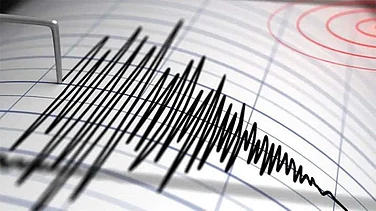Recent days have seen some very scandalous allegations made against the probable future Chief Justice of India. They not only seem to be wholly and entirely fabricated, meritless and without any proof but also deeply scandalous and extremely problematic. The Honourable Chief Justice of the apex court of the land is a key constitutional position - one that embodies extraordinary constitutional gravitas and commands deep respect. Being the Chief of one of the three pillars --- namely of the Judiciary --- the Chief Justice’s position occupies an unequivocally important place in the relationship between the Legislature, the Executive, and the Judiciary.
Courtrooms are spaces that deal with justice and often morality, ethics and rights. As the ultimate interpreters of the Constitution, they form a crucial voice in any democracy. They are also the guardians of the legal position of the other organs. The landmark case of Kesavananda Bharati showed that the courts had the power to see the very source of legislation and law-making power also remained under checks by propounding the doctrine of the basic structure.
As upholders of legal rights and providing substantive justice, court officials also hold an extremely important position. One of the fundamental aspects of the law is that the population in general should have faith in its institutions and processes. Justice, as they say, should not only be done but also seen to be done. There is an additional maxim that Fīat jūstitia ruat cælum- 'Let justice be done though the heavens falls'. Thus the public perception of justice and its institutions is extremely crucial; it is only then that the population will have faith in the systems and processes and this in turn leads to widespread acceptance and compliance with laws.
Criticism and dissent are however equally important. The relatively rarely used Contempt of Courts Act of 1971 gives the courts the power to punish wilful disobedience. It also prohibits undermining the majesty of the Law as well as scandalising the law. However, this power is sparingly used and requires a cumbersome procedure to be followed. Thus, the Act is invoked in extreme situations where other alternatives are not possible.
However, valuing the importance of criticism and dissent, the courts have various inbuilt mechanisms. Dissenting opinion by brother and sister judges is one such glaring example. The inbuilt powers of review and appeal equally allow for the courts to treat law and legislation as living documents and procedures where past judgments can be reconsidered and indeed changed. Such powers have been exercised in judgments like the Privacy judgment. Criticism is also welcomed by the courts. It is not uncommon for courts to use academic texts and other sources to come to decisions for example.
Nonetheless, criticism driven by agenda and self-interests presents a grave danger. The malicious attacks on lawyers as well as judges including sometimes deeply personal attacks present a grave danger. Unlike other organs of the state, the judiciary is usually circumvented in engaging with or responding to unwelcome commentary. This compounds the echoing chambers of misinformation and gossip as well as malicious attacks. Freedom of speech, a fundamental right, as it is, has also inbuilt limitations. These kinds of attacks tread on that path.
Law needs to be followed and to be seen as a worthy institution (as opposed to other competing rivals). In order to be that, the functionaries and the systems need to enjoy legitimacy. It is thus in everyone’s interest to maintain that. In no way does this mean silencing critique. It is on the other hand highly encouraged, including by the courts themselves.
The courts are their own conscience keepers -- the collegial atmosphere and the principles that guide them and those who function within them stand the test of time. Within this context, the courts are also evolving. In fact, the latest judgment to allow live telecasting of the court proceedings shows the willingness to make justice transparent, visible and inclusive (It was remarked that the ‘sun is the best disinfectant!’). These steps will certainly go a long way in making the justice system inclusive and accessible. Each citizen is given the opportunity to witness this decision-making at work. This certainly creates an ethos of accessibility and allows each citizen to participate in the bigger system of justice and thereby strengthening rule of law.
Law thrives on criticism, introspection and competing views. Nonetheless, the attacks on judicial officers seem to be extremely counterproductive and uncalled for. They serve no purpose whatsoever and create a very unwelcome situation threatening institutions and causing misinformation. As responsible citizens, we must step up and ensure that the majesty of institutions remains intact and that criticism is fair, constructive and within the bounds of institutional morality.
























